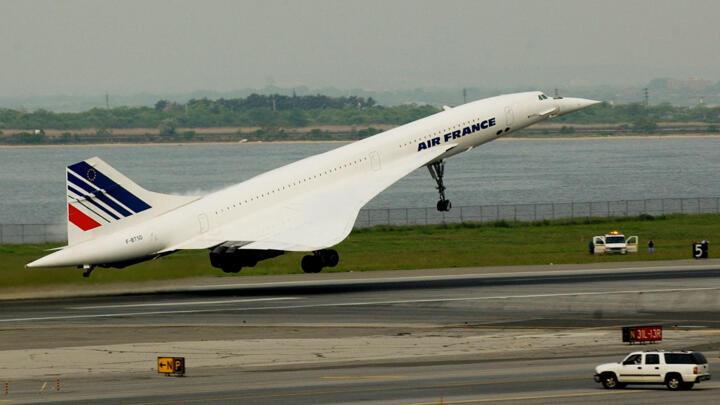The first Concorde jet has been officially declared a historical monument in France, marking a significant milestone in aviation history. This iconic supersonic aircraft, renowned for its groundbreaking speed and engineering, now holds a protected status that recognizes its cultural and technological importance. The announcement, covered by AugustMan Singapore, highlights the enduring legacy of the Concorde as a symbol of innovation and Franco-British collaboration in the aerospace industry.
First Concorde Jet Gains Historic Monument Status in France Recognizing Aviation Excellence
In a landmark decision, France has officially granted historical monument status to the very first Concorde jet, acknowledging its pivotal role in aviation history and technological innovation. This designation not only cements the aircraft’s legacy but also ensures its preservation for future generations to appreciate the trailblazing supersonic passenger experience. As a symbol of Franco-British engineering excellence, the Concorde broke conventional barriers in speed, altitude, and design sophistication, inspiring countless advancements in aerospace engineering. Authorities emphasize that the monument status celebrates the Concorde’s unique contribution to global aviation, as well as its enduring cultural significance.
The Concorde’s historic monument status brings several key benefits and protections, including:
- Legal safeguarding against alterations that might compromise its structural authenticity
- Funding allocation for its upkeep, restoration, and public exhibition
- Educational initiatives promoting the aircraft’s story and technological marvels to new audiences
- Promotion of heritage tourism centered around aviation milestones
| Key Milestone | Date | Significance |
|---|---|---|
| First Flight | March 2, 1969 | Initiated supersonic passenger travel |
| Entry into Service | January 21, 1976 | Regular commercial operations began |
| Retirement | 2003 | Concluded an era of supersonic commercial flights |
Preserving a Supersonic Legacy Insights into Conservation Efforts and Museum Future
The recognition of the first Concorde jet as a historical monument in France marks a significant milestone in preserving aviation heritage. Conservation efforts are now geared towards maintaining the aircraft’s immaculate condition, ensuring that future generations can witness the epitome of supersonic engineering first-hand. Restoration specialists have adopted innovative techniques, combining traditional craftsmanship with modern materials to halt deterioration caused by time and environmental exposure. These measures underscore a commitment not only to physical preservation but also to keeping alive the technological and cultural narrative that the Concorde embodies.
Looking ahead, plans to integrate the Concorde into a dynamic museum environment include interactive exhibits and immersive digital experiences. This approach aims to engage visitors deeply, allowing them to explore the jet’s groundbreaking legacy through multimedia displays and augmented reality walkthroughs. Key conservation priorities focus on:
- Structural Integrity: Regular inspections and targeted reinforcements.
- Environmental Control: Climate regulation within display areas to slow material degradation.
- Educational Outreach: Programs developed for schools and aviation enthusiasts.
| Conservation Aspect | Objective | Status |
|---|---|---|
| Exterior Paintwork | Preserve original livery and markings | Completed |
| Engine Preservation | Prevent corrosion and maintain display condition | Ongoing |
| Cabin Restoration | Restore interior fittings to original specifications | In Planning |
Impact on French Aviation Heritage and Tourism Opportunities for Industry Growth
The designation of the first Concorde jet as a historical monument is a monumental step towards preserving France’s rich aviation legacy. This recognition not only cements the Concorde’s iconic status but also serves as a cultural touchstone that honors decades of technological innovation and engineering prowess. Museums and historical sites across France can now leverage this prestigious status to attract aviation enthusiasts, historians, and tourists alike. By celebrating the Concorde’s pioneering supersonic flights, local communities stand to gain renewed interest and support for preserving aerospace heritage while educating future generations.
This historic milestone opens new avenues for tourism and economic growth in the aviation sector. Regional airports and heritage centers are expected to see an increase in visitor footfall, which in turn boosts local economies through hospitality, retail, and transportation services. Key growth opportunities include:
- Specialized aviation tours focusing on the Concorde’s development and legacy.
- Interactive exhibitions utilizing augmented reality to recreate supersonic flights.
- Collaborations with aerospace companies to inspire innovation-themed events and conferences.
- Development of educational programs targeting schools and universities to foster interest in STEM fields.
| Opportunity | Potential Impact |
|---|---|
| Heritage Tourism | Increased museum attendance and cultural interest |
| Local Economy Boost | Growth in hospitality and retail sectors |
| Educational Outreach | Enhanced STEM engagement among youth |
| Industry Partnerships | New collaborative innovation opportunities |
Recommendations for International Collaboration to Promote Global Supersonic Travel Awareness
In advancing the resurgence of supersonic travel, fostering an international dialogue that spans governments, aerospace pioneers, and environmental experts is key. Joint research initiatives and shared technology platforms can accelerate innovation, balancing speed with sustainability. Countries should establish multilateral forums to align regulations and safety standards, ensuring a seamless and secure supersonic network that transcends borders. Moreover, creating unified public awareness campaigns will cultivate a global appreciation for the historical and future significance of supersonic aviation.
Strategic partnerships could also focus on educational outreach and community engagement to dispel misconceptions about supersonic flight’s environmental impact. The following recommendations highlight critical collaborative efforts:
- Shared Environmental Protocols: Harmonize noise abatement and emissions guidelines across nations.
- Innovation Hubs: Establish cross-country aerospace centers dedicated to next-generation supersonic technologies.
- Public Engagement Programs: Coordinate educational initiatives featuring historical milestones like the Concorde and the future potential of supersonic jets.
| Collaborative Action | Benefits | Key Stakeholders |
|---|---|---|
| Unified Safety Standards | Enhanced passenger confidence | International Aviation Authorities |
| Joint Environmental Research | Reduced ecological footprint | Environmental Agencies & Aerospace Firms |
| Global Awareness Campaigns | Wider public acceptance | Media & Industry Leaders |
The Conclusion
The designation of the first Concorde jet as a historical monument in France marks a significant milestone in preserving the legacy of supersonic passenger travel. As this iconic aircraft takes its place among the nation’s treasured heritage, it serves as a powerful reminder of the technological innovation and aviation milestones achieved during its era. Enthusiasts and historians alike can now look forward to the continued celebration and study of Concorde’s remarkable contribution to aviation history.




